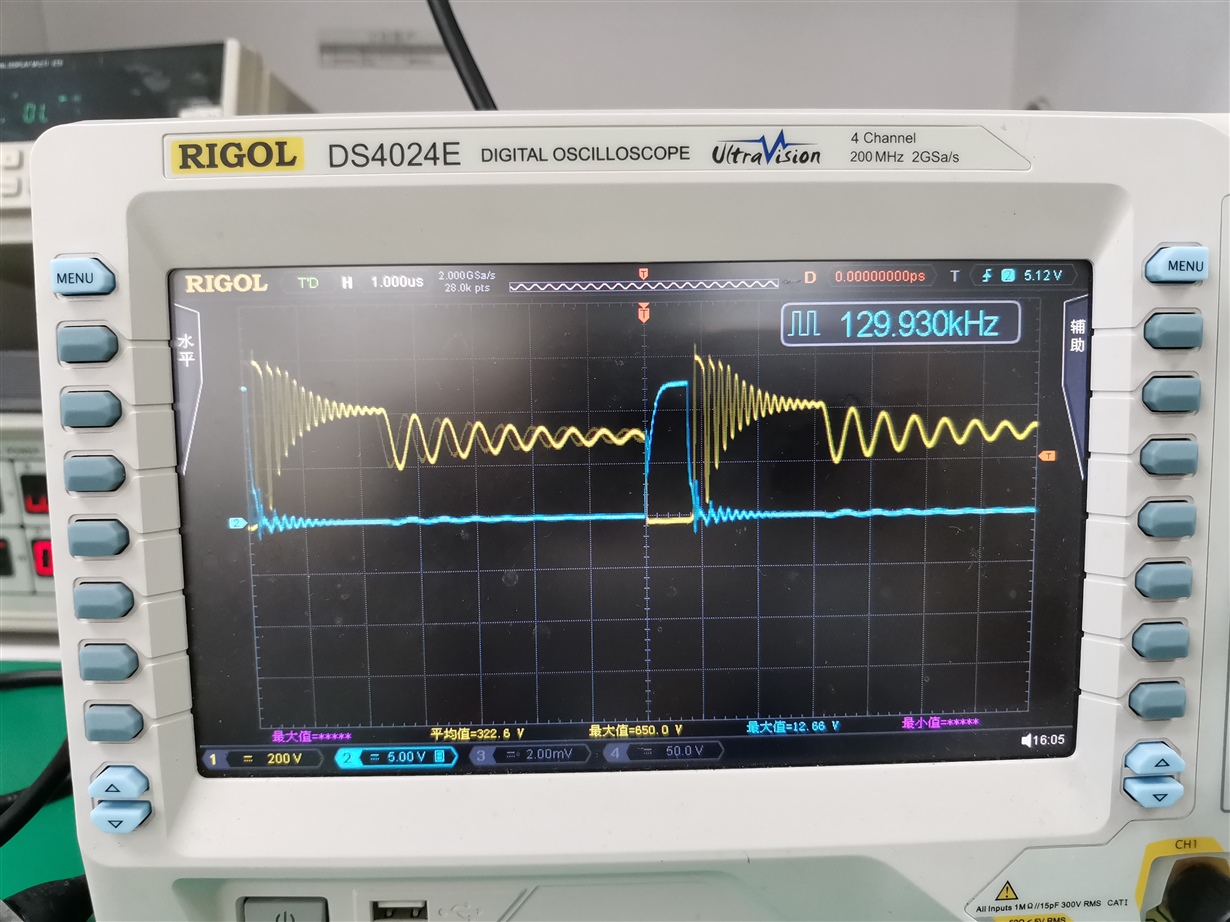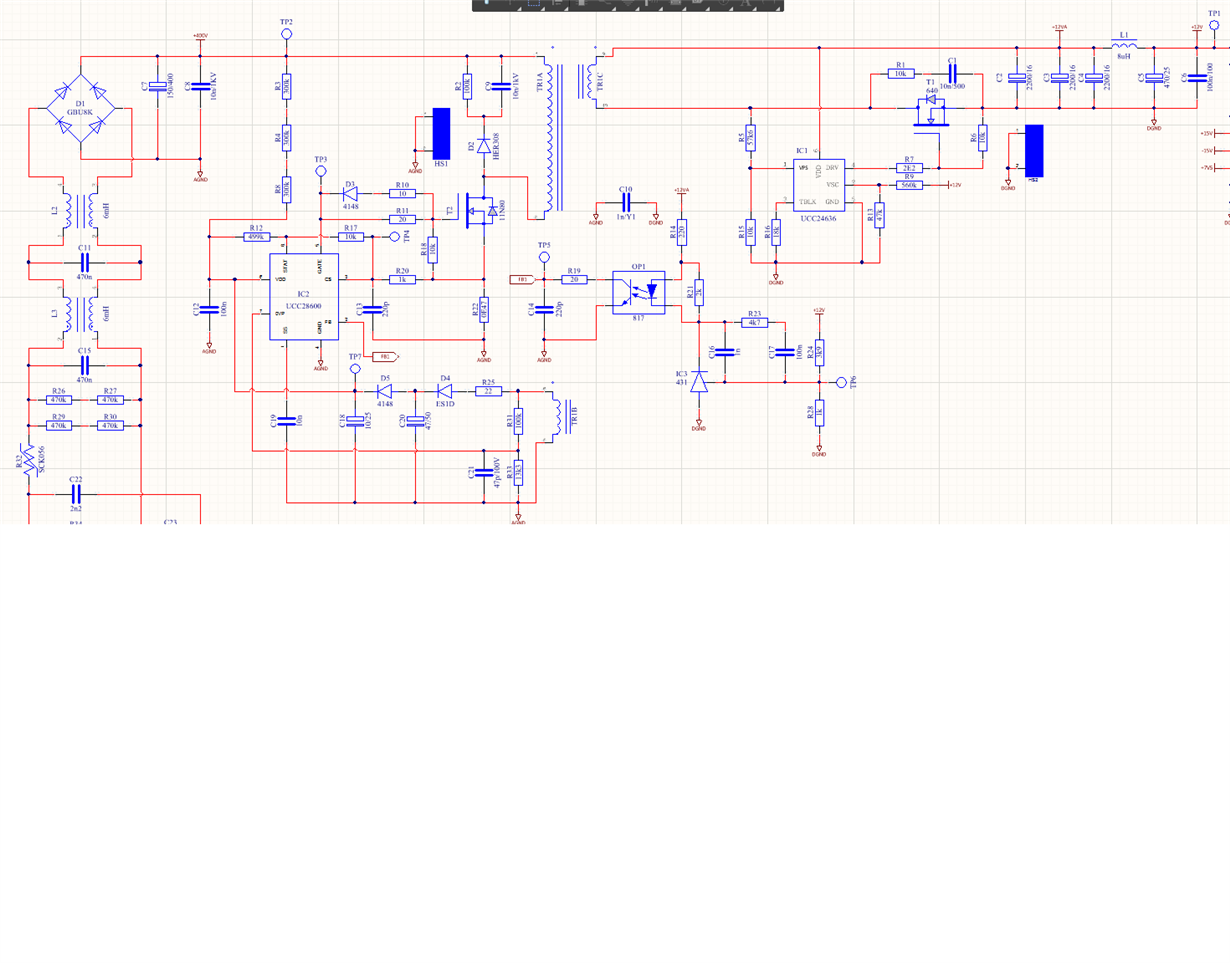Hello,TI engineer,
i use the UCC28600 for qr flyback ,but the efficiency is low ,my condition is :
Input: 85Vac-164Vac, Output :12V 100W, the bias voltage is 12V also,
the transform design :PQ3230 NP=18 NS=2 Nb=2 Lm=100u Lk=3.5u
schematic as below:
i do not use the SR and i place a diode (B20100G) temporary,the efficiency is about 78% at 5A ,and when to the full load ,the efficiency 75% .
the DS and GS wave also as below: i think the DS wave has bad ring,could you please help ?thanks
RCD i change to R=47K(3W) C=3N3 D=HER308 OR 4007,BUT not improve .



